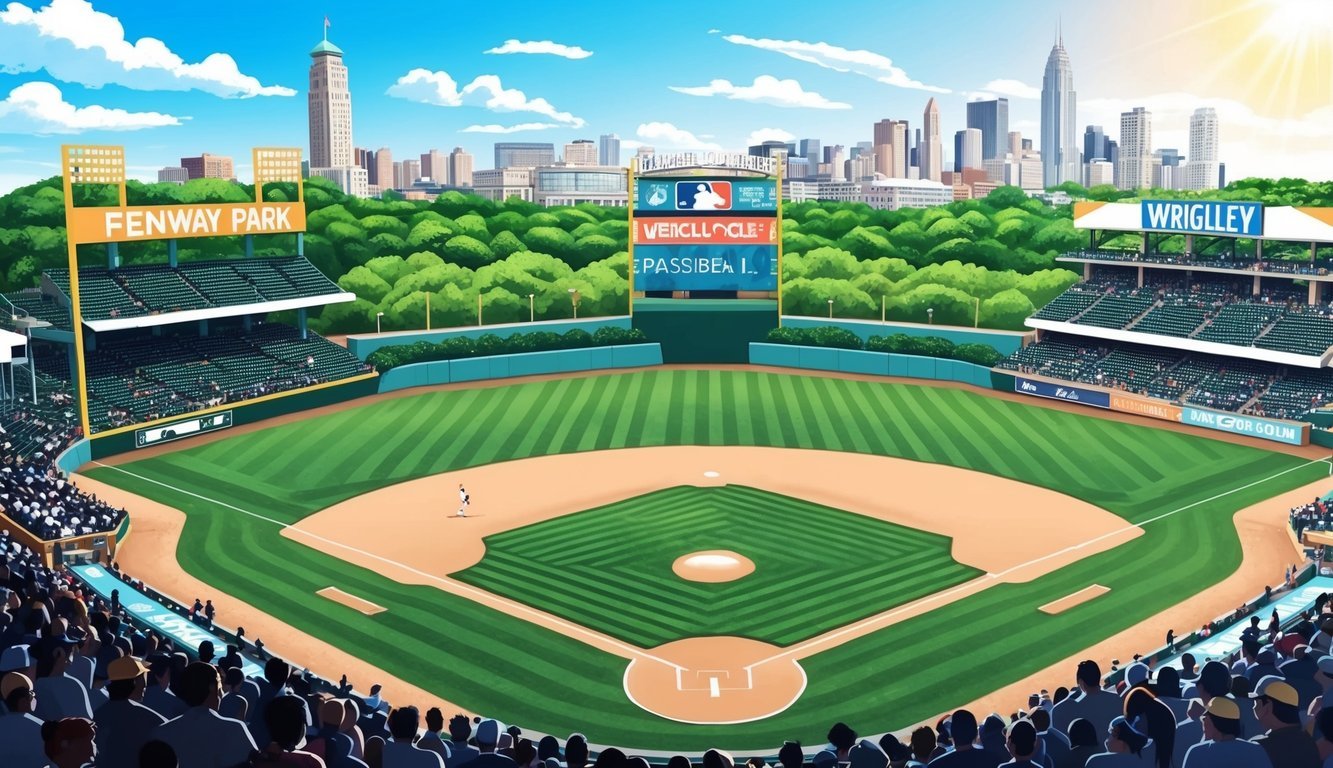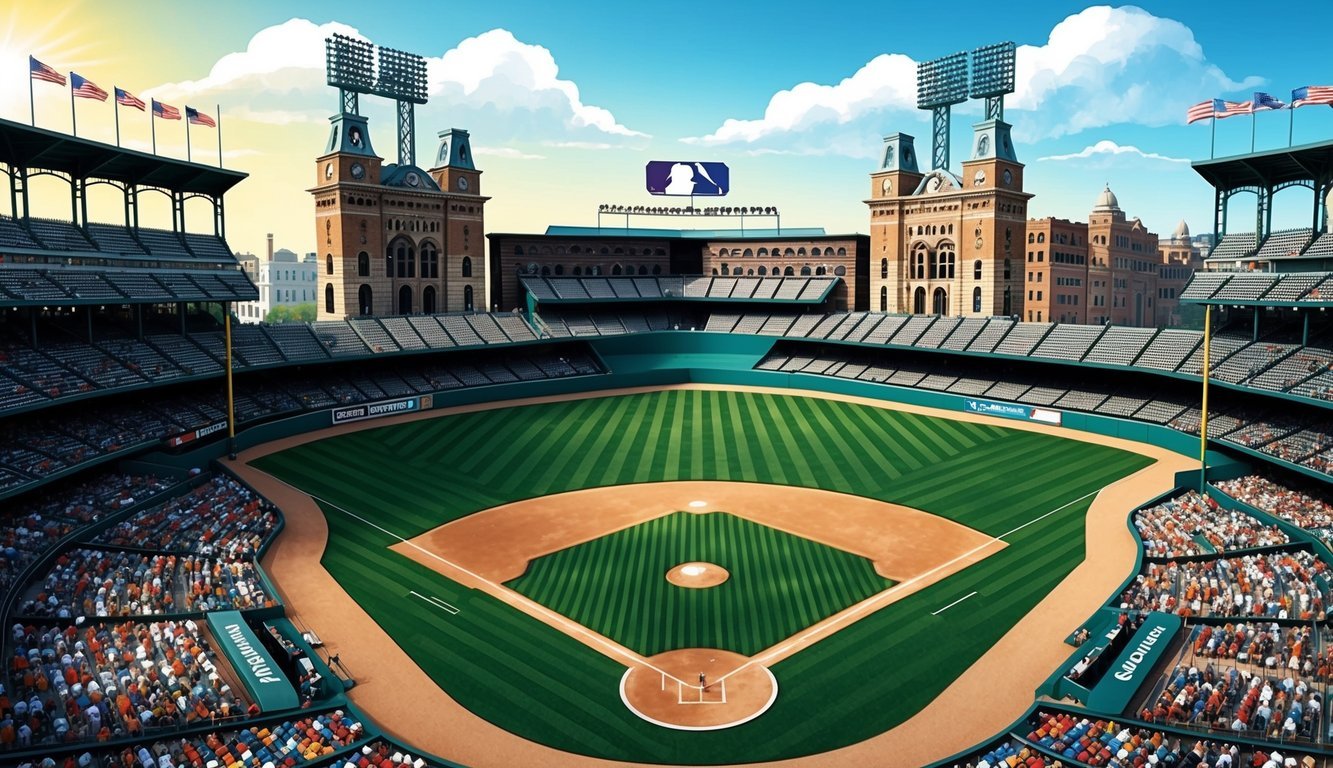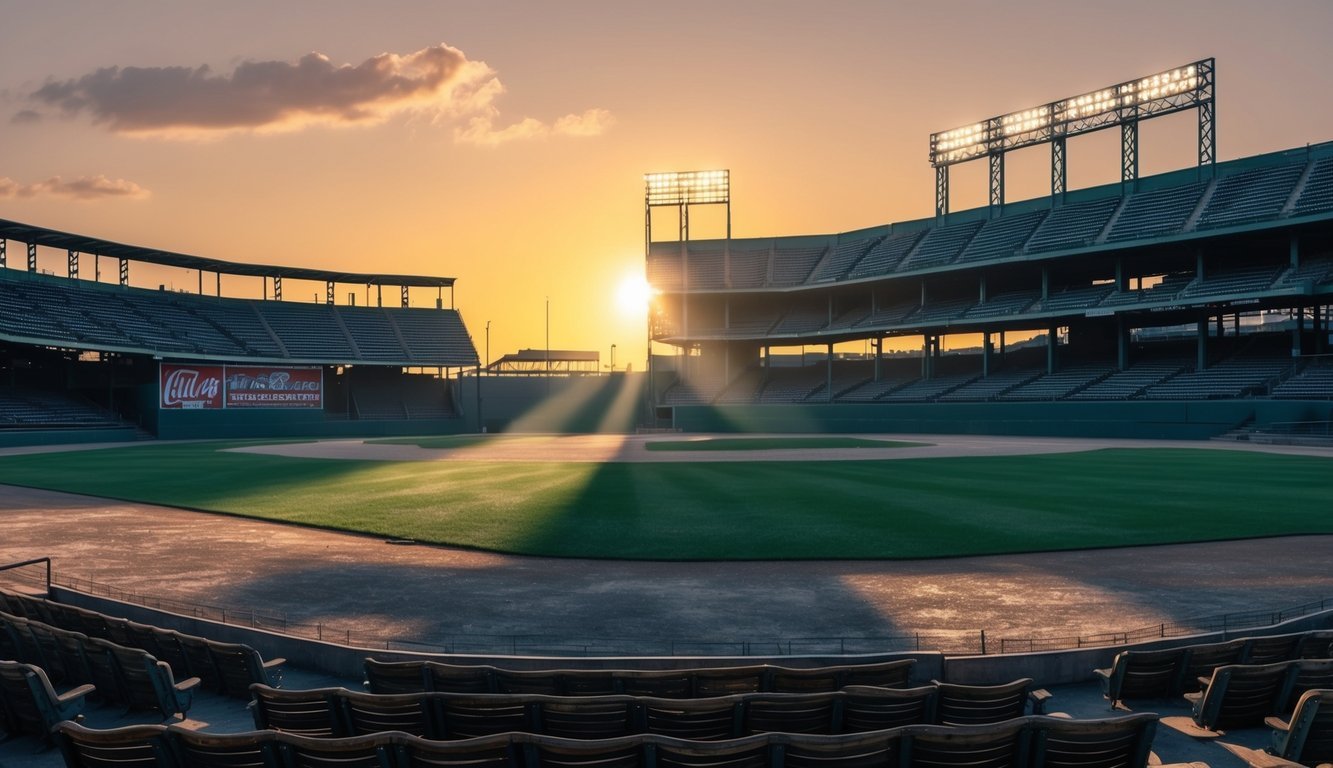Baseball fans cherish the rich history and nostalgia of iconic ballparks across the nation.
From Fenway Park in Boston to Wrigley Field in Chicago, these historic stadiums have witnessed countless memorable moments in America’s favorite pastime. Fenway Park, the oldest active Major League Baseball stadium, opened its gates in 1912 and continues to captivate fans over a century later.
These venerable venues offer more than just a place to watch a game.
They serve as living museums, preserving baseball’s heritage while providing a unique atmosphere that modern stadiums struggle to replicate.
The crackle of peanut shells underfoot, the smell of hot dogs wafting through the air, and the sight of hand-operated scoreboards transport visitors to a bygone era of the sport.
Exploring historic ballparks allows fans to connect with baseball’s roots and experience the game as generations before them did.
Whether it’s touching the Green Monster at Fenway or sitting in the bleachers at Wrigley, these stadiums offer a tangible link to baseball’s storied past that continues to inspire and excite fans of all ages.
The Icons of Baseball

Baseball’s most legendary ballparks have become iconic symbols of America’s pastime.
These historic venues blend timeless traditions with modern amenities, creating unforgettable experiences for fans.
Fenway Park: Home of the Green Monster
Fenway Park opened its gates in 1912, making it the oldest active Major League Baseball stadium.
The Boston Red Sox’s home field is renowned for its unique features, especially the towering left field wall known as the Green Monster.
Standing 37 feet tall, the Green Monster presents a formidable challenge for hitters and outfielders alike.
Its manual scoreboard adds a touch of nostalgia to the ballpark experience.
Fenway’s intimate seating and quirky dimensions create a cozy atmosphere that transports fans back to baseball’s golden age.
The park’s rich history includes countless memorable moments, from Ted Williams‘ home runs to David Ortiz’s clutch hits.
Wrigley Field: A Century of Traditions
Built in 1914, Wrigley Field is the National League’s oldest ballpark and home to the Chicago Cubs.
Its ivy-covered outfield walls and hand-operated scoreboard are instantly recognizable symbols of baseball heritage.
Wrigley’s famous bleachers and rooftop seating offer unique vantage points for fans to catch the action.
The stadium’s location in the heart of Chicago’s Wrigleyville neighborhood creates a lively pre- and post-game atmosphere.
One of Wrigley’s most beloved traditions is the flying of a “W” flag after Cubs victories.
This custom dates back to the 1930s and has become a rallying cry for generations of fans.
Yankee Stadium: The House That Ruth Built
While the original Yankee Stadium was replaced in 2009, its legacy lives on in the new ballpark.
The home of the New York Yankees has hosted some of baseball’s greatest players and most iconic moments.
Nicknamed “The House That Ruth Built” after Babe Ruth, Yankee Stadium has been the stage for 27 World Series championships.
The new stadium preserves many elements of its predecessor, including Monument Park, which honors Yankee legends.
The ballpark’s design blends modern amenities with classic touches, like the white facade that adorned the original stadium’s roof.
Yankee Stadium continues to be a symbol of baseball excellence and a pilgrimage site for fans worldwide.
Architectural Marvels and Innovations
Baseball stadiums have evolved into impressive structures that blend history, technology, and fan experience.
These architectural wonders showcase innovative designs that honor the game’s traditions while embracing modern amenities.
Oriole Park at Camden Yards: Blending Old with the New
Oriole Park at Camden Yards revolutionized stadium design when it opened in 1992.
Its red brick exterior and steel framework pay homage to classic ballparks, while incorporating modern conveniences.
The stadium’s intimate seating arrangement brings fans closer to the action.
Wide concourses and unobstructed views enhance the visitor experience.
Fans can easily navigate the space, allowing for a more enjoyable atmosphere throughout the game.
The stadium also offers a variety of amenities, including food options and interactive areas for families.
For those looking to indulge in a premium experience, the box seats at baseball games provide an unparalleled vantage point and luxurious comforts that elevate the overall enjoyment of the match.
A standout feature is the B&O Warehouse beyond right field.
This restored 1,016-foot-long building serves multiple purposes and provides a unique backdrop for games.
Camden Yards sparked a trend of “retro-classic” ballparks across MLB, influencing stadium construction for years to come.
Dodger Stadium: Modernism in the City of Angels
Opened in 1962, Dodger Stadium remains a shining example of mid-century modern architecture.
Its clean lines and innovative design have stood the test of time.
The stadium’s terraced parking lots and landscaped entrances create a dramatic approach for fans.
Inside, the wavy roof and colorful seat levels add visual interest.
Dodger Stadium was built into a hillside, allowing for stunning views of downtown Los Angeles and nearby mountains from the upper decks.
Recent renovations have added new amenities while preserving the stadium’s classic look and feel.
Coors Field: Mile-High Baseball Experience
Coors Field in Denver combines modern conveniences with a classic ballpark atmosphere.
Opened in 1995, it was designed to fit seamlessly into the surrounding neighborhood.
The stadium’s red brick exterior echoes nearby warehouses.
Inside, dark green seats and a clock tower in center field create a timeless ambiance.
Coors Field’s most unique feature is its high altitude.
At 5,200 feet above sea level, it presents challenges for pitchers and opportunities for hitters.
The stadium boasts expansive mountain views and a “Rock Pile” seating area in center field.
A nearby microbrewery adds local flavor to the fan experience.
Memories of the Diamond: Historic Events and Figures

Baseball’s rich tapestry is woven with unforgettable moments and legendary figures who shaped the game.
From barrier-breaking heroes to awe-inspiring feats, these stories continue to captivate fans across generations.
Jackie Robinson: Breaking Barriers
On April 15, 1947, Jackie Robinson stepped onto Ebbets Field, shattering baseball’s color barrier.
His courage and skill paved the way for integration in America’s pastime.
Robinson faced intense discrimination but persevered, earning Rookie of the Year honors and helping the Brooklyn Dodgers win the 1955 World Series.
His impact extended far beyond the diamond, inspiring social change throughout the nation.
Today, every Major League Baseball team retires Robinson’s number 42 in his honor.
Moments That Shaped the Game
Babe Ruth’s “Called Shot” in the 1932 World Series remains one of baseball’s most iconic moments.
The Sultan of Swat allegedly pointed to the centerfield bleachers before hitting a home run to that exact spot.
In 1956, Don Larsen pitched the only perfect game in World Series history.
His flawless performance for the New York Yankees against the Brooklyn Dodgers etched his name in the record books.
The 1919 “Black Sox” scandal rocked baseball to its core.
Eight Chicago White Sox players were accused of throwing the World Series, leading to lifetime bans and the appointment of the first commissioner of baseball.
Cultural Impact and Community
Historic ballparks have shaped local identities and become integral parts of American culture.
These iconic venues foster deep connections between teams, fans, and cities.
Local Economies and Team Pride
Baseball stadiums boost local economies and instill community pride.
On game days, nearby businesses thrive as fans flock to restaurants, bars, and shops.
This economic activity creates jobs and generates tax revenue for cities.
Team merchandise sales soar, with fans proudly wearing their favorite players’ jerseys.
Local radio and TV stations benefit from broadcasting games, further spreading team spirit.
Stadiums often become landmarks, featured on postcards and in city skylines.
This visibility enhances civic pride and attracts tourists, contributing to the area’s overall appeal.
Baseball, Ballparks, and The American Experience
Baseball and its historic venues are woven into the fabric of American life.
Families pass down team loyalties through generations, creating shared memories and traditions.
Stadiums host community events beyond baseball, like concerts and graduations.
This versatility strengthens their role as gathering places for locals.
The sport’s rich history is preserved in these ballparks, with plaques and statues honoring past heroes.
Fans can walk the same grounds as legendary players, feeling connected to the game’s storied past.
Ballpark traditions, like singing “Take Me Out to the Ball Game,” unite fans across the nation.
These shared experiences reinforce baseball’s status as America’s pastime.
End of an Era: The Lost Ballparks

Several iconic baseball stadiums have disappeared from the landscape, taking with them decades of memories and history.
These beloved parks were more than just venues; they were characters in baseball’s rich story.
Remembering Tiger Stadium and Ebbets Field
Tiger Stadium stood proudly in Detroit for nearly a century.
Its intimate design brought fans close to the action, with upper deck seats hanging over the field.
The stadium’s flagpole in center field became a quirky feature players had to navigate.
Ebbets Field, home of the Brooklyn Dodgers, was a cherished part of New York baseball from 1913 to 1957.
Its distinctive facade and close-knit atmosphere made it a fan favorite.
The ballpark’s demise coincided with the Dodgers’ move to Los Angeles, marking the end of an era for Brooklyn baseball enthusiasts.
The Fate of the Polo Grounds and Forbes Field
The Polo Grounds hosted both the New York Giants and Yankees at different times.
Its unusual bathtub shape, deep center field, and short foul lines created a unique playing experience.
A New York landmark, the stadium’s final game in 1963 drew emotional crowds bidding farewell.
Forbes Field in Pittsburgh was known for its ivy-covered brick walls and spacious outfield.
It also witnessed Bill Mazeroski’s dramatic World Series-winning home run in 1960.
The park’s demolition in 1971 left fans with bittersweet memories of its 61-year history.
